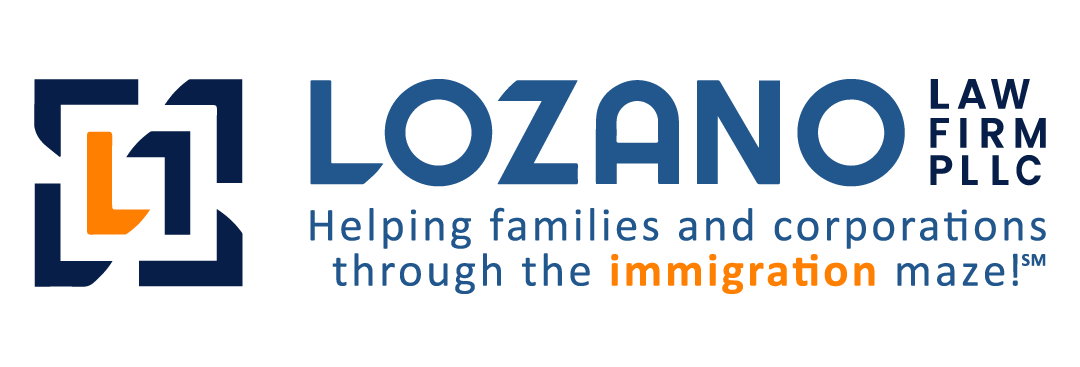For H-1B Visa holders, obtaining a Green Card brings stability and freedom. It removes concerns about expiring Visas or work restrictions and marks a significant step toward building a future in the United States. While the process involves potential challenges, proper legal support from an H-1B Visa immigration lawyer can significantly ease your transition.
This article provides valuable insights to help you secure permanent residency through an employer-sponsored Green Card. Explore your transition options, the key stages of the process, and how an attorney can assist you at every step.

Understanding The H-1B Visa & Its Limitations
The H-1B Visa is a cornerstone of employment-based immigration in the United States. It opens doors for foreign nationals to work in specialized jobs that typically require a bachelor’s degree or higher. Common industries for H-1B Visa holders include technology, finance, healthcare, and engineering.
The U.S. Citizenship and Immigration Services (USCIS) uses this program to fill labor gaps, especially in sectors with a shortage of American workers. H-1B workers remain tied to the employer who sponsors their Visa. If they want to change jobs, they must find another employer willing to file for a new H-1B Visa, which can be challenging.
While the H-1B Visa permits temporary employment, it does not grant permanent residency. The initial validity lasts three years, with an option to extend it to another three. After these six years, you must leave the U.S. unless you have taken steps to secure a Green Card or found another eligible Visa.
This temporary nature often drives Visa holders to explore long-term options for staying in the country, typically by applying for a Green Card. Fortunately, various employment-based Visa classifications can facilitate a smooth transition to permanent residency in the U.S.
Employment-Based Pathways To A Green Card
H-1B Visa holders seeking to establish permanent roots in the U.S. can find a reliable path to residency through employment-based (EB) Visas. They enable skilled foreign workers to move beyond the constraints of temporary Visas like the H-1B. The two most common employment-based Green Cards are the EB-2 and EB-3 categories.
EB-2 Visa
The EB-2 Visa caters to individuals with advanced degrees or those demonstrating exceptional ability in their field. Your job must require such a degree, and you must hold one or its foreign equivalent to qualify under the advanced degree subcategory.
A U.S. bachelor’s degree or foreign equivalent combined with at least five years of progressive work experience can also suffice. You must provide documentation like academic records and employer letters to prove eligibility.
The second subcategory under EB-2 serves those with exceptional ability in sciences, arts, or business. Qualifications must significantly exceed typical industry standards. To prove this, you must meet at least three of the following criteria:
- An academic degree or diploma related to your field.
- Employers’ letters showing over 10 years of full-time work experience.
- A valid license or certification to practice in your profession.
- Proof of earning a salary that reflects your exceptional ability.
- Membership in a professional association.
- Recognition for your achievements by peers, government, or professional organizations.
USCIS accepts other comparable evidence beyond the listed items, as individual circumstances can vary. The strict requirements for both EB-2 Visa subcategories ensure only highly educated or accomplished professionals qualify.
EB-3 Visa
The EB-3 Visa serves a broader group of workers compared to the EB-2. It is divided into three categories: skilled workers, professionals, and unskilled workers.
Skilled workers must have at least two years of experience or training, while professionals should hold a bachelor’s degree in a specialized field. Although less common among H-1B Visa holders, unskilled workers can qualify for an EB-3 Visa if they occupy positions requiring less than two years of experience.
While the EB-3 process may take longer than the EB-2 due to higher demand, it often remains more accessible. This pathway allows workers without advanced degrees or highly specialized skills to contribute to the U.S. workforce.
You must assess your qualifications and employer’s needs to choose the most suitable pathway. EB-2 and EB-3 Visas lead to a Green Card, but your specific credentials and job duties will determine which category suits you best. Whichever option you choose, the path to permanent residency follows a similar process.
Key Stages Of The Green Card Process
Securing a Green Card through employer sponsorship involves several steps that require collaboration between you, your employer, and USCIS. The transition from temporary work status to permanent residency through EB-2 and EB-3 Visas follows a similar path and generally shares common steps.
Step 1: Find A Qualified U.S. Employer
To start the process, you need a U.S. employer willing and eligible to sponsor your Green Card. They must embrace the responsibility of filing detailed paperwork, covering specific fees, and demonstrating that no qualified U.S. worker is available for the job. They must commit to navigating this process from start to finish.
Step 2: Employer Files PERM Labor Certification
After the employer agrees to sponsor you, they must file for a PERM (Program Electronic Review Management) labor certification. The PERM process aims to prove to the U.S. Department of Labor (DOL) that no qualified U.S. workers are available for the offered position.
The employer must conduct a thorough recruitment effort, including advertising the job and reviewing applicants. They must demonstrate that hiring a foreign worker will not displace American workers.
Step 3: Submit Immigration Petition (Form I-140)
After the labor certification receives approval, the employer must file Form I-140, Immigration Petition for Alien Worker. The employer submits this form to USCIS to confirm that they and the foreign worker meet the Green Card requirements.
The foreign worker must prove their qualifications, experience, and skills. The employer must demonstrate their financial ability to pay the offered wage and comply with U.S. employment laws.
Step 4: Monitor Your Priority Date
After you file Form I-140, keep an eye on your priority date. This date, which reflects when the labor certification was filed, determines when you can proceed with your application based on Visa availability.
Visa numbers are limited each year, and certain countries often experience long wait times due to high demand. Your priority date establishes your place in line for a Visa. Only when your priority date becomes current, meaning a Visa is available, can you proceed with the next steps of your Green Card application.
Step 5: Undergo Adjustment Of Status (Form I-485)
Once your priority date becomes current, you can file for Adjustment of Status using Form I-485 if you are already in the U.S. If successful, this process officially changes your standing from temporary worker to permanent resident.
You must meet several key requirements, including submitting personal documents, undergoing a medical exam, and attending a biometrics appointment to provide your fingerprints. USCIS will also conduct a background check to confirm your eligibility for a Green Card. After it approves your application, you will be granted permanent residency.
By understanding these steps, you can prepare for the journey from temporary work status to lawful permanent residency. Although the process may seem lengthy, you can handle each stage effectively with the right lawyer.
Local H-1B Visa Attorney Simplifies Your Transition
Working with an H-1B Visa attorney in Texas simplifies transitioning to a Green Card. Local attorneys understand the needs of Texas employers and tailor their strategies to fit the regional business environment. Their knowledge of state and federal immigration laws ensures a more efficient and effective path to permanent residency.
Avoiding Costly Mistakes & Delays
An experienced attorney ensures your Green Card application avoids common errors that cause delays or rejections. They fill out your forms accurately, meet all deadlines, and submit the necessary evidence. By keeping everything on track, they prevent costly delays that arise from improperly handled applications.
Giving Personalized Legal Guidance
Each case differs, and a local attorney provides tailored advice based on the unique details of your situation. A skilled H-1B Visa immigration lawyer considers state-specific factors like local job markets and employer requirements. This personalized guidance provides a strategy that aligns with your personal and professional circumstances.
Managing Effective Employer Communication
Many employers lack a full understanding of immigration law, which can unintentionally delay the process. A local attorney acts as a liaison between you and your employer, ensuring they meet all legal obligations and file the necessary documents on time. Their knowledge of local business culture streamlines communication and helps avoid missteps.
Handling USCIS Challenges
A seasoned H-1B Visa attorney in Texas skillfully handles unexpected challenges like Requests for Evidence (RFEs) or USCIS audits. They gather the necessary documentation and present a strong case to keep your application on track without setbacks. Their knowledge of Texas gives them valuable insight into addressing these situations effectively.
Navigating work commitments with the complexities of immigration law is a balancing act. Any mistake could jeopardize your chances of securing permanent residency. To avoid this, search for an “H-1B Visa attorney near me” to ensure a smooth and hassle-free status transition.
Lozano Law Firm Guides You Towards Permanent Residency
At Lozano Law Firm, we help H-1B Visa holders in Texas and beyond transition to permanent residency. We understand the Green Card process can feel complex and intimidating, especially when balancing work and personal life. Our team provides personalized legal services tailored to your unique situation.
Whether you’re starting your journey or facing obstacles, we guide you every step of the way. Our dedicated team strongly advocates for employer-sponsored Green Cards, including PERM labor certifications, I-140 petitions, and Adjustment of Status applications. Our knowledge of the local job market and employers allows us to offer tailored solutions.
Our team ensures clear communication and constant support throughout the Green Card process. From handling requests for evidence to navigating changing immigration policies, Lozano Law Firm is your trusted partner in securing permanent residency in the U.S.
Summary
Becoming a Green Card holder through employer sponsorship significantly changes the lives of H-1B Visa holders in the U.S. It is vital to understand the different pathways, such as EB-2 and EB-3, to navigate the key stages of the process. This transition can unlock new career opportunities with proper preparation and legal guidance.
Partnering with a trusted H-1B Visa law firm like Lozano Law Firm ensures that your Green Card application receives the precision and care it deserves. We commit to guiding you through every stage for a smooth and efficient process. Take the next step toward your permanent residency journey with capable support.

 Thank you for contacting us. Please complete this form and one of our team members will be in touch with you soon.
Thank you for contacting us. Please complete this form and one of our team members will be in touch with you soon.


